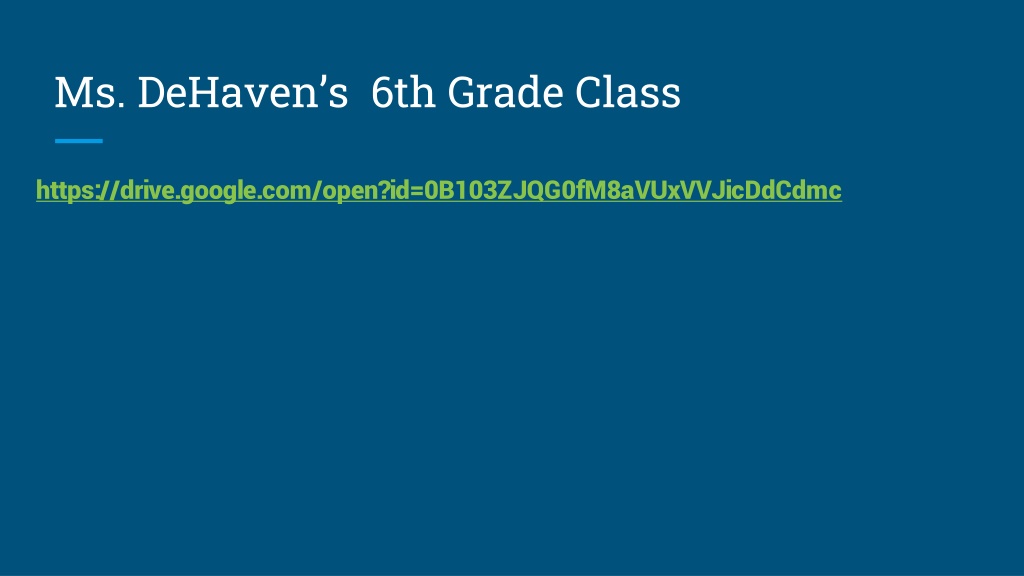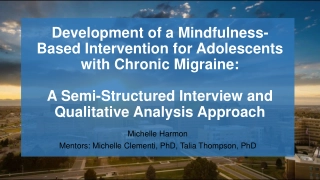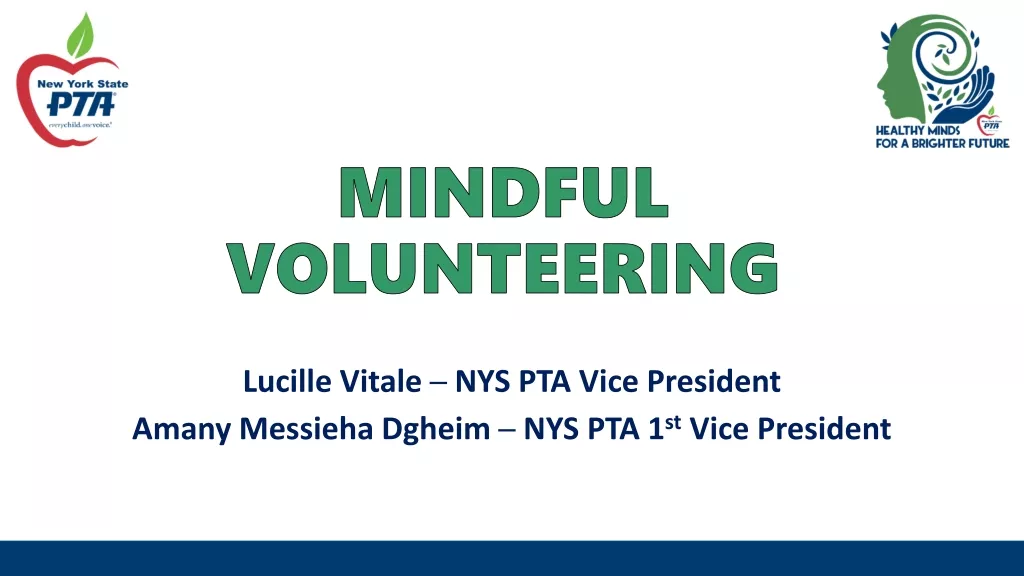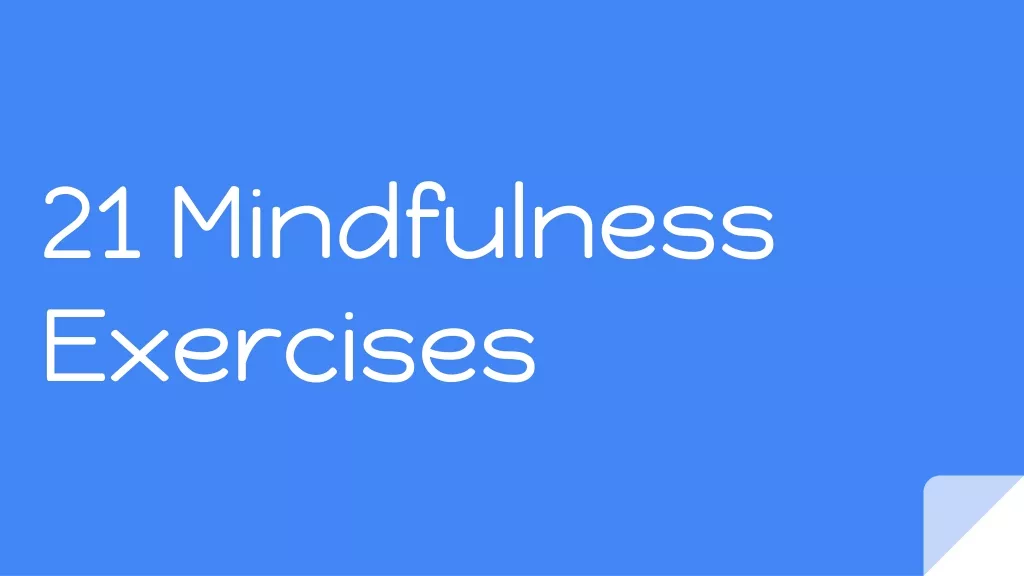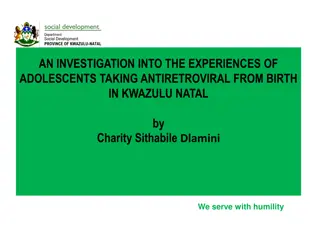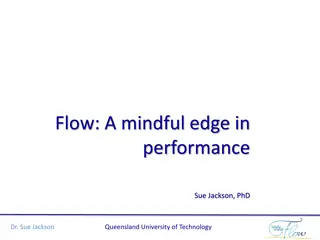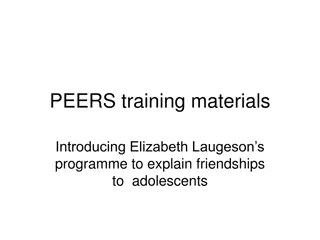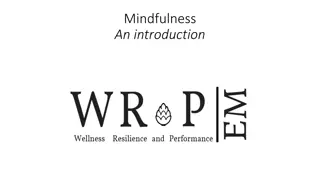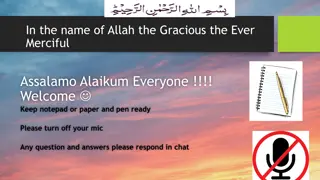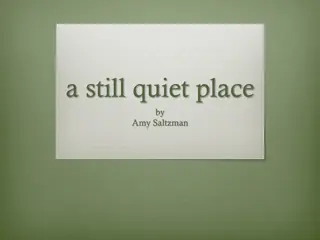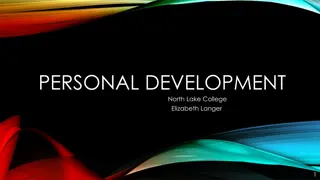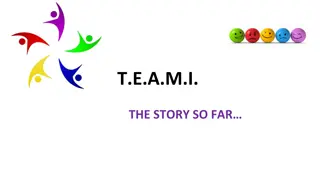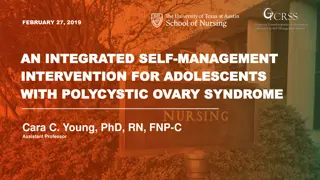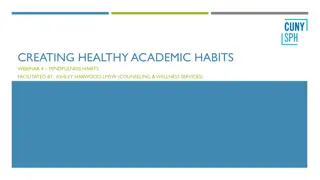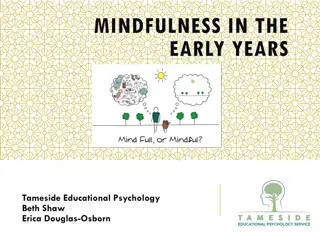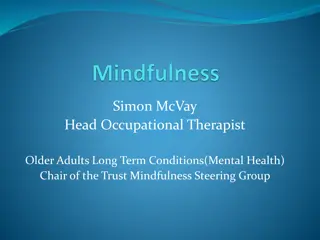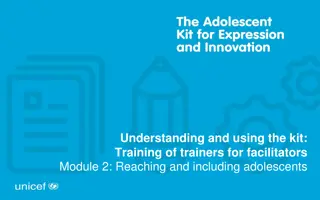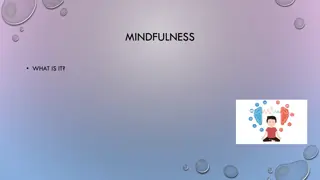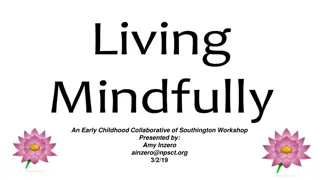Mindfulness Practices for Adolescents: Learn to Cultivate Awareness
Explore mindfulness practices such as MindUP and Learn to Breathe for adolescents to enhance emotion regulation, attention, and performance. Understand the core meditations, attitudinal foundations, and the benefits of mindfulness in daily life. Dive into resources and curriculums aimed at cultivating a culture of mindfulness in educational settings.
Download Presentation

Please find below an Image/Link to download the presentation.
The content on the website is provided AS IS for your information and personal use only. It may not be sold, licensed, or shared on other websites without obtaining consent from the author. Download presentation by click this link. If you encounter any issues during the download, it is possible that the publisher has removed the file from their server.
E N D
Presentation Transcript
Ms. DeHavens 6th Grade Class https://drive.google.com/open?id=0B103ZJQG0fM8aVUxVVJicDdCdmc
Mindfulness Practices: MINDUP Learn 2 Breathe Presented by: Carol Nickles and Heidi Mancusi Mount Horeb Area School District
Objectives 1.Experience mindfulness exercises 2.Learn about what mindfulness is and current research 3.Learn how to cultivate mindfulness into your district s culture 4.Learn of 2 mindfulness curriculum: Learn to Breathe and MINDUP 5.Learn about current resources
What is mindfulness? http://mindfulnessforteens.com/ Attention to the present, with compassion. Pillars of happiness -Real Happiness at Work, Sharon Salzberg Balance in life Communication and Connection Concentration Integrity Compassion Meaning Resilience Open awareness
Full Catastrophe Living - Jon Kabat-Zinn The attitudinal foundations of mindfulness practice 1.Non-judging 2.Patience 3.Beginner s Mind 4.Trust 5.Non-striving 6.Acceptance
Core Meditations Mindfulness of the Breath Identifying Emotions The Body and Walking Letting Go of Thoughts Loving Kindness
Learning to Breathe: A Mindfulness Curriculum for Adolescents to Cultivate Emotion Regulation, Attention, and Performance by Patricia Broderick, PhD http://learning2breathe.org/ This curriculum is based on Jon Kabat-Zinn s pioneering work on mindfulness based stress reduction that is supported by rigorous research. It is a clear, user friendly, and inspiring guide for bringing mindfulness to our youth
Learn to Breathe Curriculum Heidi and I co-facilitated/delivered the curriculum with six high school students in the Spring of 2015. All of these students struggled with anxiety and some with anxiety and depression. L2B offers six and eighteen session programs. We implemented the six week session program. Share themes--B=Body; R=Reflections; E=Emotions; A=Attention; T=Tenderness; H=Habits We collected pre and post group data based on statements of attitudes and knowledge of stress factors and we also conducted individual interviews with each student after the conclusion of the group.
Learn to Breathe Body--Listen! Your BODY is trying to tell you something. Reflections--Thoughts are just thoughts Emotions--Surf the waves of your Emotions Attend--Attend to the inside and the outside Try Tenderness--Take it as it is Habits--Practice Healthy Habits of the mind Empowerment--Gaining the inner edge!
Learn to Breathe curriculum We collected pre and post group data based on statements of attitudes and knowledge of stress management. We also conducted individual interviews with each student for feedback on most salient lesson/s learned from the group. The results were mixed. We consulted with Ms. Broderick recently and learned of the program satisfaction scale, the affective self regulatory efficacy measure, and other instruments in the manual. The interviews yielded the following comments in answer to the following question: What did you learn that will help you manage your stress in a healthier way? Thoughts are just thoughts . Pay attention to your body .
Learn to Breathe--student feedback Be mindful! The past is in the past! Find fun healthy ways to take care of yourself. Be where you are. Be kind to yourself. ALL of the students gave L2B class an enthusiastic thumbs up and would recommend it to their peers/classmates. They also shared the opinion that it should be taught to all students.
Why mindfulness? Student health -ready to learn? Attention/concentration tool Classroom climate Teacher health
Brain Physiology Sympathetic nervous system vs. Parasympathetic nervous system Fight or flight vs. resting state cortisol levels, heart rate, breathing Amygdala vs. Prefrontal cortex stimulus-->reaction stimulus-->mindfulness response
MindUP Curriculum http://thehawnfoundation.org/mindup/ Our School Psychologist, Tara Hogseth and our School Counselor, Krisann Weier facilitated a small support group with six sixth grade students and implemented 15 lessons on a weekly basis from February until June 2015. MIndUP focuses on teaching students about mindful attention so they are ready to learn and interact with their peers. It also encourages students to monitor their own senses and become more aware of their world so they can respond reflectively.
MindUP Curriculum Grades 6-8 The first few lessons focus on the brain (how our brains react to stress and the Core Practice). The middle lessons focus on sharpening the senses (listening, seeing, smelling, tasting, and movement). The last few lessons focus on attitude, joyfulness and finding optimism in daily life.
MindUP Overall impressions--positive experience but lessons could be combined and it would be optimally effective to implement it in the classroom on a Tier 1 level. They also felt that the Core Practice would be worth practicing more often. They collected pre and post surveys with 1-10 scale with 1=strongly disagree/don t understand and 10=strongly agree/understand fully. Students understanding of the Core Practice went from a 1.8 to a 7. Students perception of finding daily joy and optimism went from a 5.8 to a 7.
MindUP curriculum Grade 2 Our K-2 School Counselor, Emily McKee began delivering MindUP with second grade students in the classroom for six weeks. She shared that teaches a lesson on brain anatomy, on defining mindfulness, and then utilizes sections from the MindUp curriculum on mindful listening, mindful attention, and deep breathing. She also utilizes exercises from the book, Sitting Still Like a Frog. Emily plans to expand on utilizing more of the MindUp curriculum next school year and develop an evaluation plan as well.
MindUP Curriculum Grade 5 There is much enthusiasm among our five fifth grade teachers and they are all in various stages of experimentation with mindfulness and utilizing some of the MindUp curriculum. Two teachers use the centering and breathing exercises in the first few lessons and are in the habit of practicing mindful breathing every morning to start the day. One of the teachers is enlisting a small group of students (4) to read the MindUP book and help set up lesson plans. The goal is to begin teaching it in January 2016. All are eager to utilize MindUP and establish mindfulness practices in their classrooms.
Exciting Research - Mind-Body connection Norman Cousins -Anatomy of an Illness (power of joy and pain management) Bernie Siegel-Love, Medicine and Miracles.(power of mind over body) Studies have demonstrated eliciting the relaxation response affects blood pressure, heart rate, and oxygen consumption. (2008 Herbert Benson) Harvard Gazette-10/13/15 Relaxation response proves positive-study reveals how mind-body medicine could cut health care costs. James Stahl (43% reduced) Harvard Gazette-5/5/15 Meditation may relieve IBS and IBD. Researchers found the relaxation response showed improvements in the two gastrointestinal disorders. Branden Kuo -(decreases inflammatory factors)
Research on Gratitude Greater Good Science Center at the University of California, Berkeley People who regularly practice gratitude and positive thinking consistently report: Stronger immune systems and reduced illness lower blood pressure decreased time/impact of aches and pains more joy, optimism, and happiness acting with more generosity and compassion
Research in the Schools Zenner, C., Herrnleben-Kurz, S., & Walach, H. (2014). Mindfulness-based interventions in schools A systematic review and meta-analysis. Frontiers in Psychology, 5, 603. Overall improvement seen with cognitive performance and resilience to stress. Many studies with small numbers of participants, difficult to control environmental factors. Tang, Y., Yang, L., Leve, L. D., & Harold, G. T. (2012). Improving executive function and its neurobiological mechanisms through a mindfulness-based intervention: Advances within the field of developmental neuroscience. Child Development Perspectives, 6(4), 361-366. Improvements seen in attention,cognitive control, and emotional regulation.
Research here in WI - Dr. Richard Davidson http://www.investigatinghealthyminds.org/ Davidson, R. J., Dunne, J., Eccles, J. S., Engle, A., Greenberg, M., Jennings, P., . . . Vago, D. (2012). Contemplative practices and mental training: Prospects for American education.Child Development Perspectives, 6(2), 146-153. Many studies using fMRI to demonstrate changes in brain function with meditation techniques. Focus on wellbeing and factors affecting well-being.
Student reports...parent reports Emailed 90 families to inform of videotaping in the classroom -all positive responses with parents/guardians excited that mindfulness is being introduced in the classroom. Student interviews: https://drive.google.com/open?id=0B103ZJQG0fM8TUlyWHlUTkpqT00 https://drive.google.com/open?id=0B103ZJQG0fM8akRnQ1ExSUtFdjA https://drive.google.com/open?id=0B103ZJQG0fM8elplWDM2WG5ELUE
The Journey of Changing Culture-Bringing Mindfulness to your District Is every District culture the same? Every school in the district? Every classroom? There is not a prescription for bringing mindfulness to the district as it needs to be individualized to each setting. There is discussion right now about promotion of mindfulness activities by facilitating growth of practice with educators. If an educator practices mindfulness their interactions with students will change and improve even if they do not bring mindfulness practice into the classroom. Healthy Classrooms Symposium with Dr. Richard Davidson helped to spearhead change in our district.
Tools to provide information for educators Mindfulness Based Stress Reduction coursework. This was created by Jon Kabat-Zinn. In WI there are only 2 facilities that offer this course-UW Health Integrative Medicine and a course in Milwaukee (on our resource list). Other local health centers offer variations of mindfulness instruction. Book Club -At the MS in MHASD we met weekly to discuss each chapter of Real Happiness at Work by Sharon Salzberg. Outside speakers/professional development opportunities- https://drive.google.com/open?id=0B103ZJQG0fM8aGRGQzdXQy1qTTNmdHpF MG0tNUd5TWRiaU5j
Ways to use Mindfulness in your district 1:1 counseling small groups -Learn to Breathe and MindUp In the classroom https://drive.google.com/open?id=0B103ZJQG0fM8ZlloQ0xkemtaN1k https://drive.google.com/open?id=0B103ZJQG0fM8RFNhY1RwMXBLU3c District/school wide -mindful minute
Mindful Quotes for Reflection Mindfulness is about being fully awake in our lives. It is about perceiving the exquisite vividness of each moment. We also gain immediate access to our own powerful resources for insight, transformation, and healing. Jon Kabat-Zinn The most precious gift we can give others is our presence. When mindfulness embraces those we love, they will bloom like flowers. Thich Nhat Hanh It is not that mindfulness is the answer to all of life s problems. Rather it is that all of life s problems can be seen more clearly through the lens of a clear mind. Jon Kabat-Zinn
Mindfulness Quotes for Reflection Compassion for others begins with kindness to ourselves. Pema Chodron Be where you are; otherwise you will miss your life. Buddha Mindfulness helps us get better at seeing the difference between what s happening and the stories we tell ourselves about what s happening, stories that get in the way of direct experience. Often such stories treat a fleeting state of mind as if it were our entire and permanent self. Sharon Salzberg Meditation is the ultimate mobile device; you can use it anywhere, anytime, unobtrusively. Sharon Salzberg
Thank you so much for being with us today Carol Nickles, Grade 6-12 School Social Worker/K-12 Safe & Drug Free Schools nicklescarol@mhasd.k12.wi.us (608) 437-2400 x2163 Heidi Mancusi, Grade 6-12 School Nurse/ District wide Physical Therapist mancusiheidi@mhasd.k12.wi.us (608) 437-2400 x2195
Tara Hogseth, School Psychologist Mount Horeb Middle School hogsethtara@mhasd.k12.wi.us (608) 437-2400 x3309
Special Thanks to others who helped: Julie DeHaven 6th Gr. Teacher John Malecki HS teacher Anne Beier 4th Gr. Teacher Theresa Daane Director of Student Services
